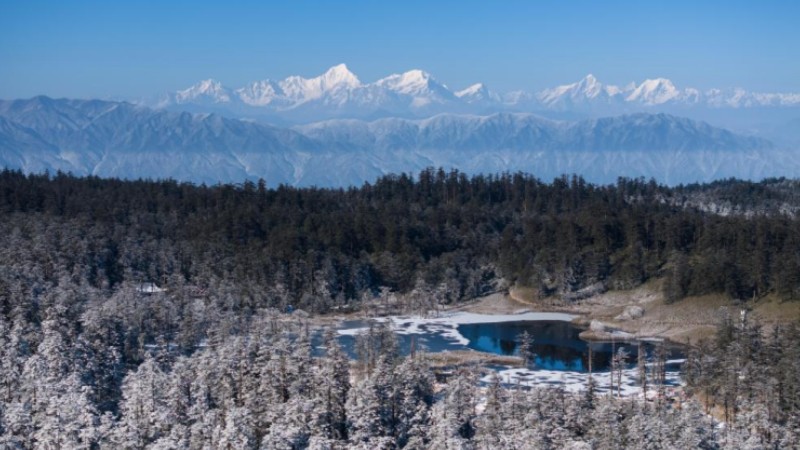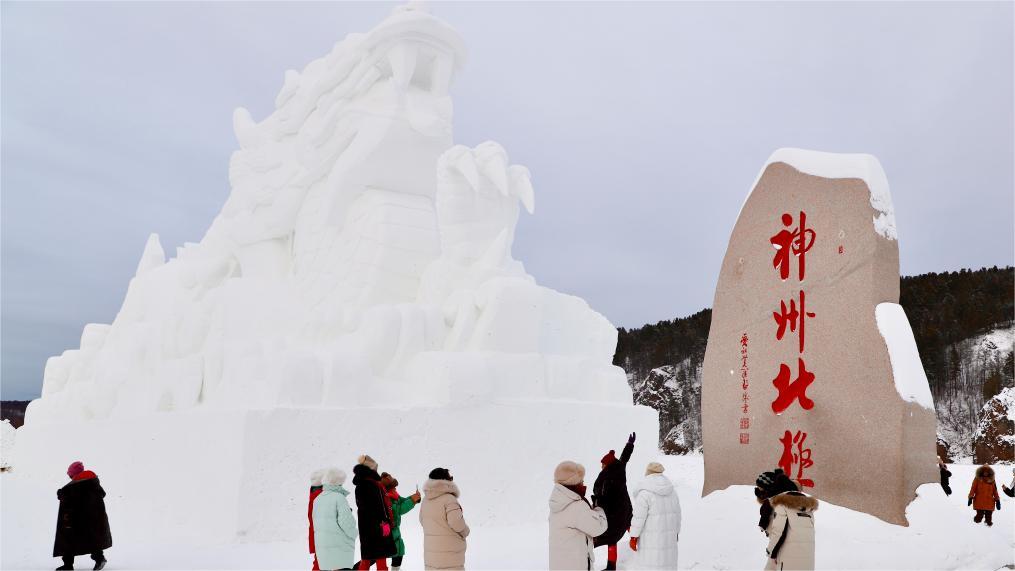Yearender: 2023 brings a tapestry of challenges and progress to the Middle East
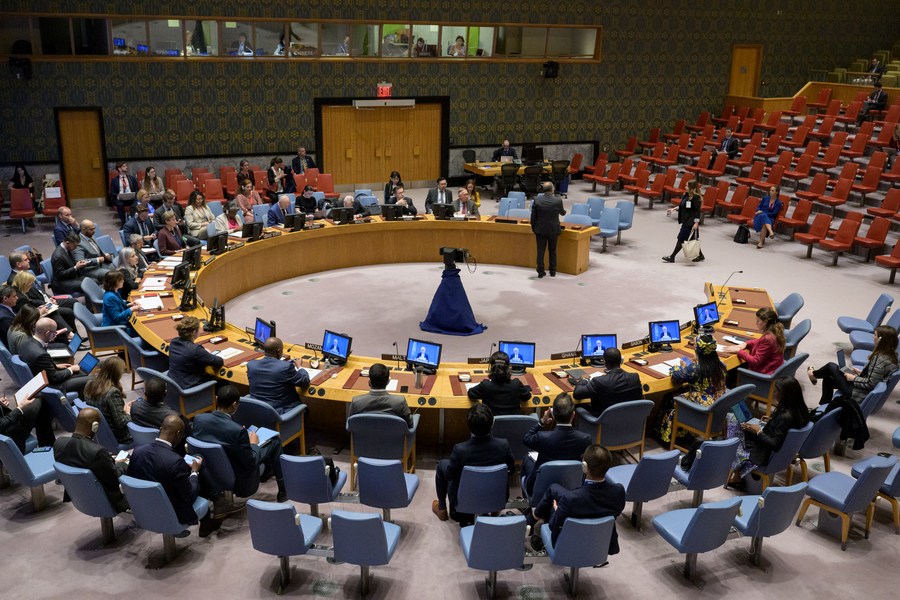
This photo taken on May 24, 2023 shows the Security Council meeting on the situation in the Middle East, including the Palestinian question, at the UN headquarters in New York. (Manuel Elías/UN Photo/Handout via Xinhua)
* Reconciliation and cooperation were prominent features in the Mideast during 2023, the landmark event of which was the normalization of diplomatic ties between Saudi Arabia and Iran.
* Multiple disasters, including earthquakes in Türkiye and Morocco, hurricanes in Libya, and conflicts in Gaza, Sudan and Yemen, all cast a shadow over the region. In addition to natural disasters, armed conflicts shattered peaceful hopes.
* Many economies in the region entered a downturn over 2023.
CAIRO, Dec. 28 (Xinhua) -- It was a turbulent year for the Middle East. The region witnessed bouts of reconciliation, conflict and disaster. Despite an unsettling year, a glimmer of hope remains on the horizon.
HISTORICAL RAPPROCHEMENT PROGRESS
Reconciliation and cooperation were prominent features in the Mideast during 2023, the landmark event of which was the normalization of diplomatic ties between Saudi Arabia and Iran.
With the mediation of China, the two arch-rivals agreed in March to restore ties after a seven-year hiatus and re-established respective embassies and consulates. The visit of Iranian President Ebrahim Raisi to Riyadh in November to attend the Joint Arab Islamic Extraordinary Summit marked the first visit by an Iranian head of state to Saudi Arabia in over a decade.
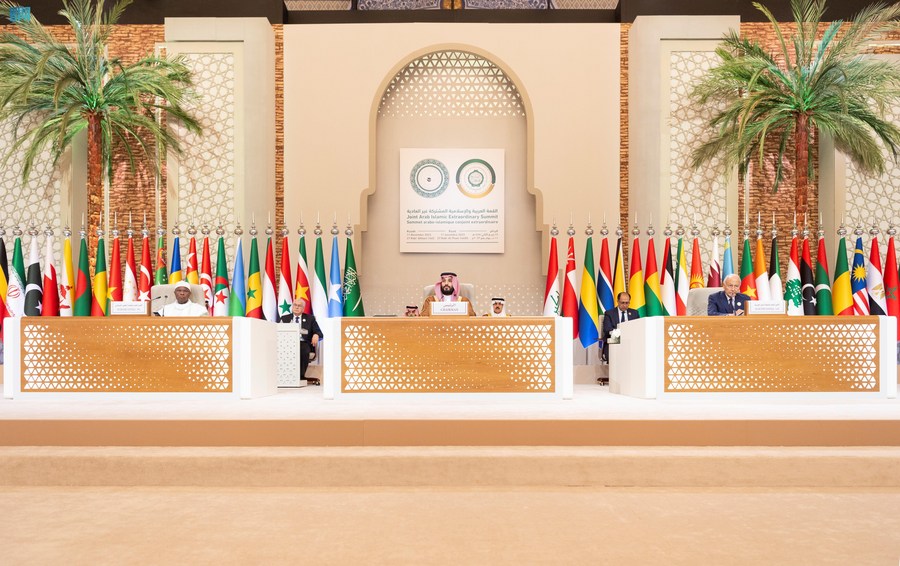
Saudi Crown Prince and Prime Minister Mohammed bin Salman Al Saud (C) speaks during the Joint Arab Islamic Extraordinary Summit in Riyadh, Saudi Arabia, Nov. 11, 2023. The Joint Arab Islamic Extraordinary Summit held in the Saudi capital of Riyadh called for an immediate cessation of military operations in Gaza. (SPA/Handout via Xinhua)
Osama Danura, a Syrian political expert, said that China played an important role in restoring Saudi-Iranian diplomatic relations, with the country's efforts welcomed by the two sides and other regional players.
At the end of 2023, the Yemeni Presidential Leadership Council and the Houthi militia committed to implementing a nationwide ceasefire, lifting economic restrictions, and engaging in preparations to resume inclusive UN-led political negotiations.
Hadeer Said, a professor of international relations at the Cairo-based Institute of Arab Research and Studies, said that rapprochement between Riyadh and Teheran helped in defusing the crisis between Houthis in Yemen and Saudi, which will contribute to settling the inflaming Yemeni crisis.
Furthermore, several reconciliation developments have been achieved in the region in 2023. Syria regained its membership in the Arab League after a suspension of over a decade, Türkiye and Egypt exchanged ministerial visits for the first time in years, and Qatar resumed diplomatic relations with Bahrain and the United Arab Emirates (UAE).
"Peace, unity, cooperation and development are in the interests of the people of Arab countries," said Saudi Crown Prince and Prime Minister Mohammed bin Salman Al Saud at the 32nd Arab League Summit held in May, stressing that "we will not let the region become a conflict zone."
In the meantime, countries in the Middle East have played an increasingly important role in international and regional multilateral organizations. In July, Iran officially joined the Shanghai Cooperation Organization. In August, Egypt, Saudi Arabia, the UAE and Iran were invited to join the BRICS cooperation bloc.
DEADLY DISASTERS & CONFLICTS
Yet multiple disasters, including earthquakes in Türkiye and Morocco, hurricanes in Libya, and conflicts in Gaza, Sudan and Yemen, all cast a shadow over the region.
On Feb. 6, a powerful earthquake struck southern Türkiye near the border with Syria, killing more than 50,000 people, leaving millions homeless and causing an estimated 100 billion U.S. dollars in damage in the country.
On Sept. 8, another quake hit Morocco, killing about 2,900 people and injuring more than 5,000.
In addition to natural disasters, armed conflicts shattered peaceful hopes. On April 15, fierce clashes broke out in Sudan's capital Khartoum between the Sudanese Armed Forces and the paramilitary Rapid Support Force, which continues up to the present.
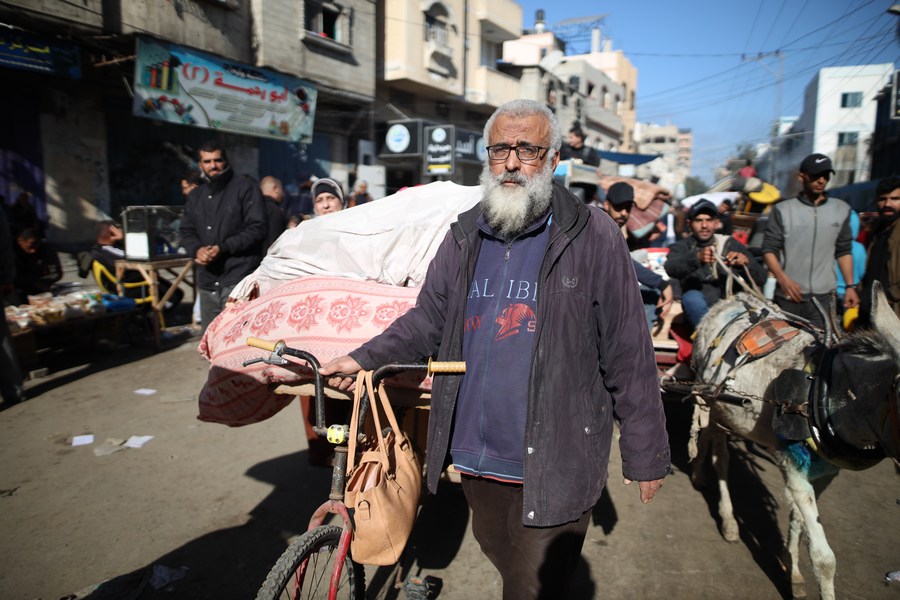
People flee from their homes at Nuseirat Refugee Camp, central Gaza Strip, on Dec. 26, 2023. (Xinhua)
On Oct. 7, a large-scale armed conflict broke out between Israel and Hamas in the Gaza Strip, causing the deaths of more than 20,000 Palestinians and about 1,200 Israelis. The Palestinian-Israeli issue has once again become the focus of attention of the international community, which has disrupted the reconciliation process between Israel and Arab countries.
Serkan Demirtas, a Turkish foreign policy analyst, said the ongoing Palestine-Israel conflict has dramatically increased geopolitical tensions across the Middle East, with a far-reaching impact on international relations.
ECONOMIC SLOWDOWN
Many economies in the region entered a downturn over 2023. Türkiye, Lebanon, Syria and Iran suffered from sharp depreciation, high inflation or soaring unemployment. The Lebanese pound, Egyptian pound and Turkish lira repeatedly hit new lows against the dollar.
What's worse, the ongoing Gaza conflict heavily impacted the economies of both sides and neighboring countries, such as Egypt, Jordan and Lebanon. The World Bank reported in October that the gross domestic product of the Middle East and North Africa was expected to decline sharply, from 6 percent in 2022 to about 1.9 percent in 2023.
Zhao Jun, an associate professor of the Middle East Studies Institute of Shanghai International Studies University, said the economic downturn in many countries in the Middle East could hardly be reversed in the short term due to low oil prices resulting in oil production cuts, a tense global financial environment, the continued raising interest rates by the U.S. Federal Reserve and the spillover effect of the Ukraine crisis on food and raw materials prices.
The good news was that the world's largest single photovoltaic power station, Al Dhafra, was completed recently in Abu Dhabi. The plant will generate electricity to power 200,000 homes annually. It will reduce carbon dioxide emissions by 2.4 million metric tons, again demonstrating the determination of the oil-and-gas-rich Gulf state to diversify its energy resources and green development.
Meanwhile, Saudi Arabia's Vision 2030, which aims to diversify its growth, gradually evolved from blueprint to reality. According to a recent report by the International Monetary Fund, Saudi Arabia is in a period of strong economic growth with a sound fiscal position.
Photos
Related Stories
- Chinese envoy calls for nuclear-weapon-free zone in Middle East
- China urges greater efforts to support establishment of nuclear-weapon-free zone in Middle East
- EU summit focuses on conflicts in Middle East, Ukraine
- GT Voice: China-GCC synergy crucial for Middle East development
- China condemns all actions harming civilians: special envoy on Middle East affairs
Copyright © 2023 People's Daily Online. All Rights Reserved.








